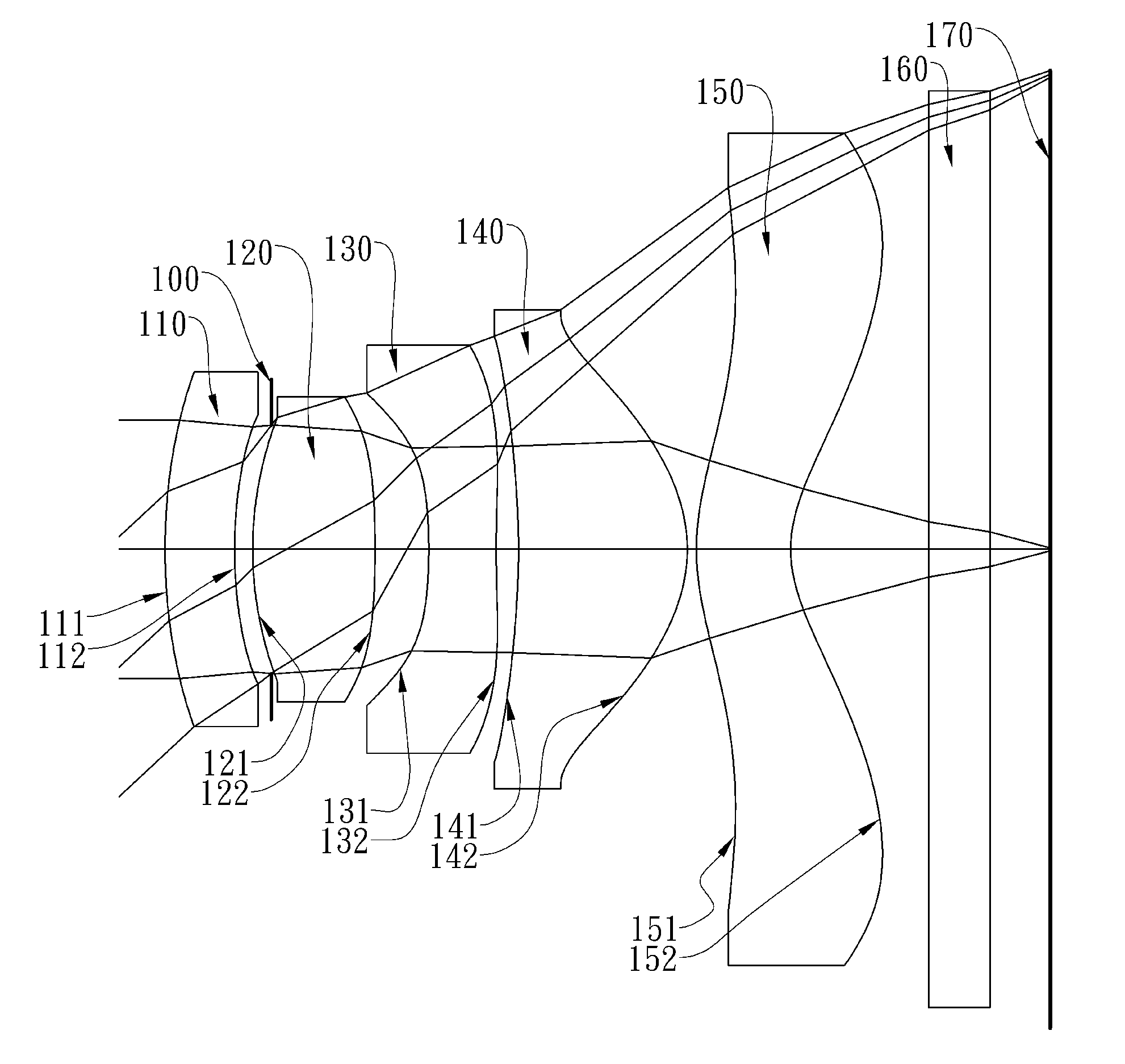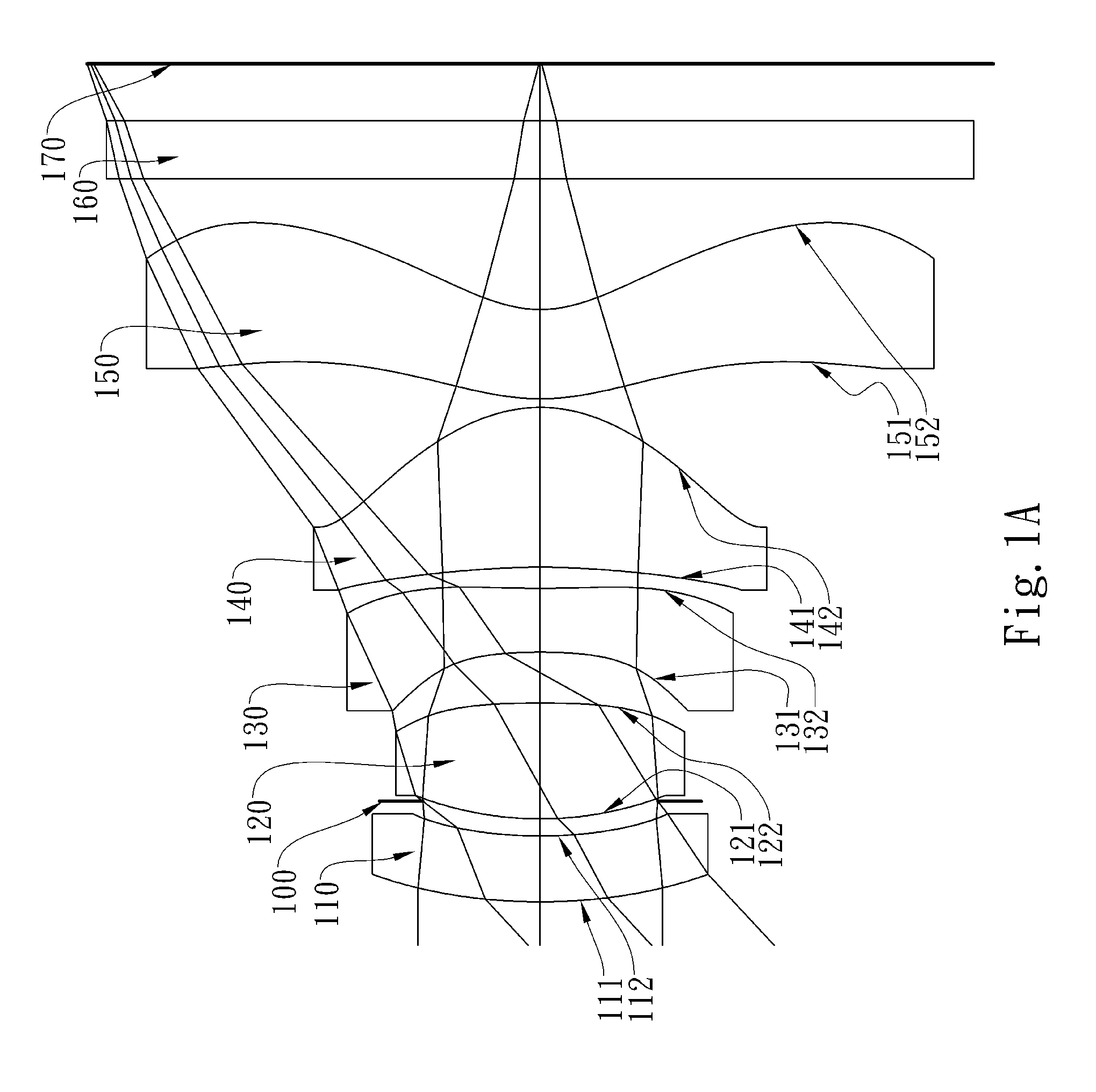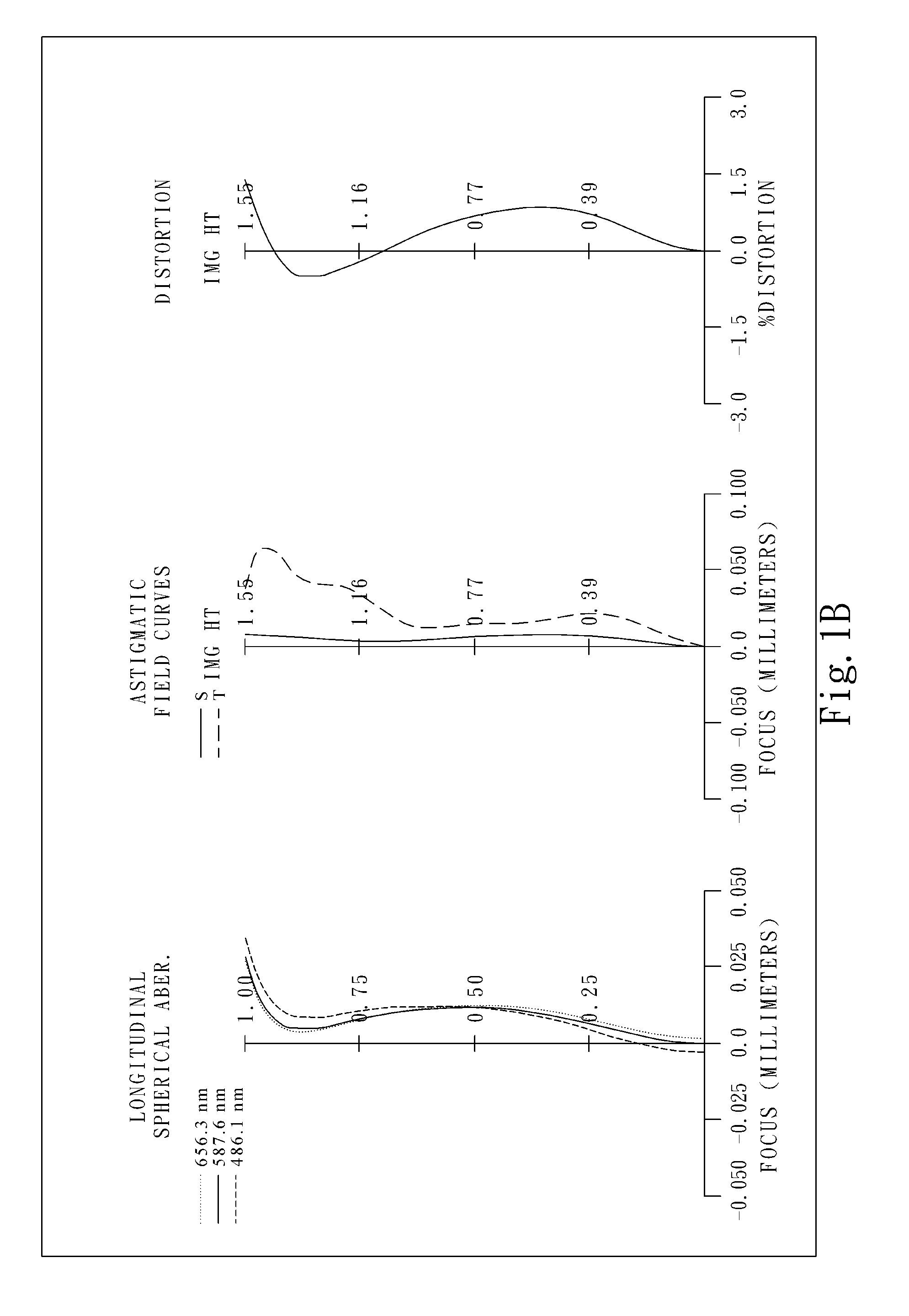Optical image capturing lens system
a technology of optical image and lens system, which is applied in the field of optical image capture lens system, can solve the problems of ineffective berration correction of optical system, achieve the effect of reducing the total track length, facilitating the enlargement of the system field of view, and effectively correcting
- Summary
- Abstract
- Description
- Claims
- Application Information
AI Technical Summary
Benefits of technology
Problems solved by technology
Method used
Image
Examples
embodiment 1
[0069]FIG. 1A shows an optical image capturing lens system in accordance with the first embodiment of the present invention, and FIG. 1B shows the aberration curves of the first embodiment of the present invention. The optical image capturing lens system of the first embodiment of the present invention mainly comprises five lens elements with refractive power, in order from an object side to an image side:
[0070]a plastic first lens element 110 with negative refractive power having a convex object-side surface 111 at the paraxial region and a concave image-side surface 112 at the paraxial region, the object-side and image-side surfaces 111 and 112 thereof being aspheric;
[0071]a plastic second lens element 120 with positive refractive power having a convex object-side surface 121 at the paraxial region and a convex image-side surface 122 at the paraxial region, the object-side and image-side surfaces 121 and 122 thereof being aspheric;
[0072]a plastic third lens element 130 with negati...
embodiment 2
[0101]FIG. 2A shows an optical image capturing lens system in accordance with the second embodiment of the present invention, and FIG. 2B shows the aberration curves of the second embodiment of the present invention. The optical image capturing lens system of the second embodiment of the present invention mainly comprises five lens elements with refractive power, in order from an object side to an image side:
[0102]a plastic first lens element 210 with negative refractive power having a convex object-side surface 211 at the paraxial region and a concave image-side surface 212 at the paraxial region, the object-side and image-side surfaces 211 and 212 thereof being aspheric;
[0103]a plastic second lens element 220 with positive refractive power having a convex object-side surface 221 at the paraxial region and a convex image-side surface 222 at the paraxial region, the object-side and image-side surfaces 221 and 222 thereof being aspheric;
[0104]a plastic third lens element 230 with neg...
embodiment 3
[0115]FIG. 3A shows an optical image capturing lens system in accordance with the third embodiment of the present invention, and FIG. 3B shows the aberration curves of the third embodiment of the present invention. The optical image capturing lens system of the third embodiment of the present invention mainly comprises five lens elements with refractive power, in order from an object side to an image side:
[0116]a plastic first lens element 310 with negative refractive power having a convex object-side surface 311 at the paraxial region and a concave image-side surface 312 at the paraxial region, the object-side and image-side surfaces 311 and 312 thereof being aspheric;
[0117]a glass second lens element 320 with positive refractive power having a convex object-side surface 321 at the paraxial region and a convex image-side surface 322 at the paraxial region, the object-side and image-side surfaces 321 and 322 thereof being aspheric;
[0118]a plastic third lens element 330 with negative...
PUM
 Login to View More
Login to View More Abstract
Description
Claims
Application Information
 Login to View More
Login to View More - R&D
- Intellectual Property
- Life Sciences
- Materials
- Tech Scout
- Unparalleled Data Quality
- Higher Quality Content
- 60% Fewer Hallucinations
Browse by: Latest US Patents, China's latest patents, Technical Efficacy Thesaurus, Application Domain, Technology Topic, Popular Technical Reports.
© 2025 PatSnap. All rights reserved.Legal|Privacy policy|Modern Slavery Act Transparency Statement|Sitemap|About US| Contact US: help@patsnap.com



